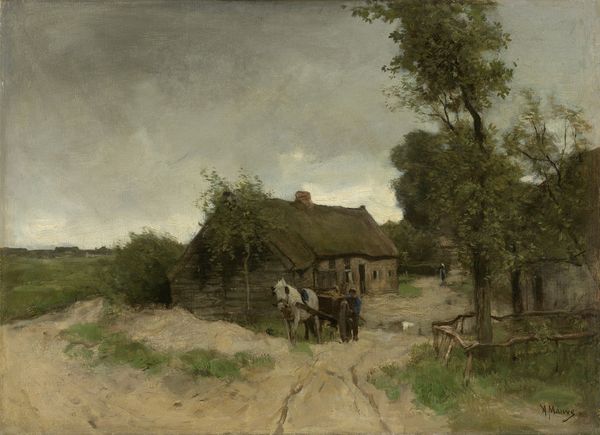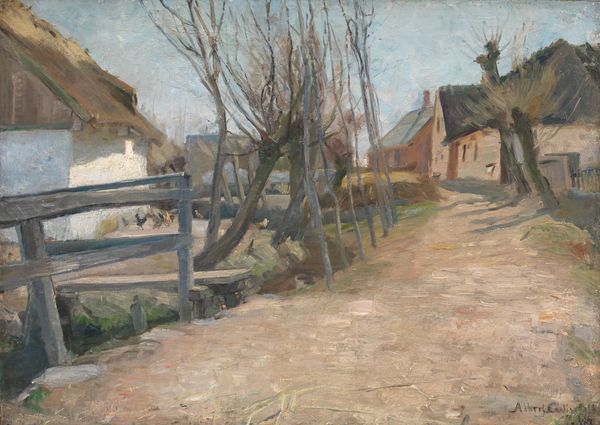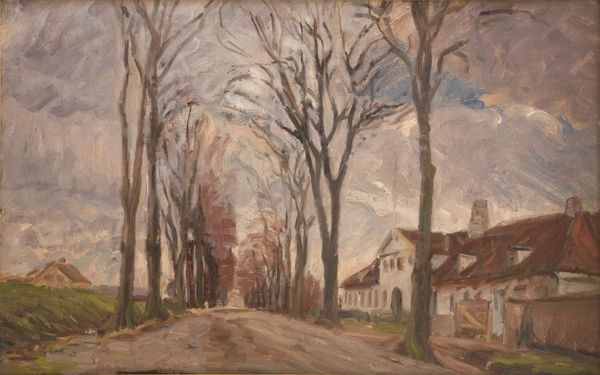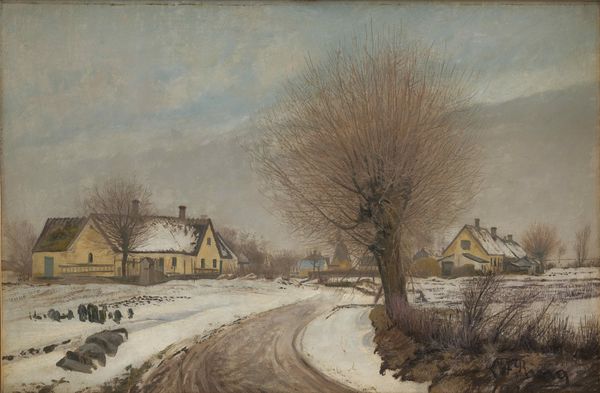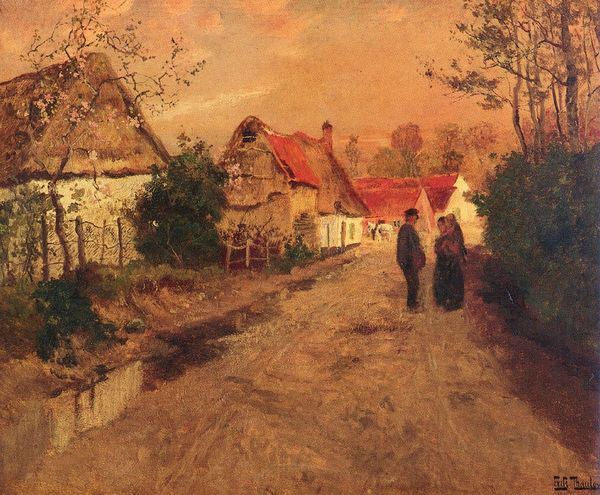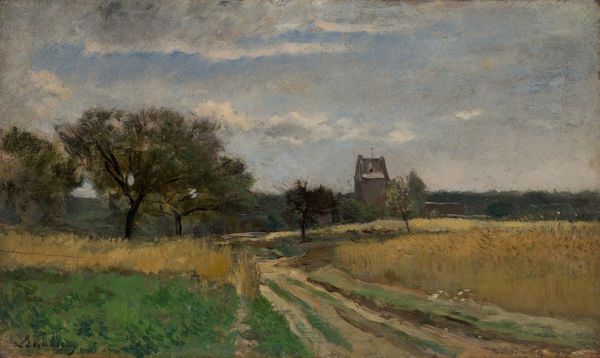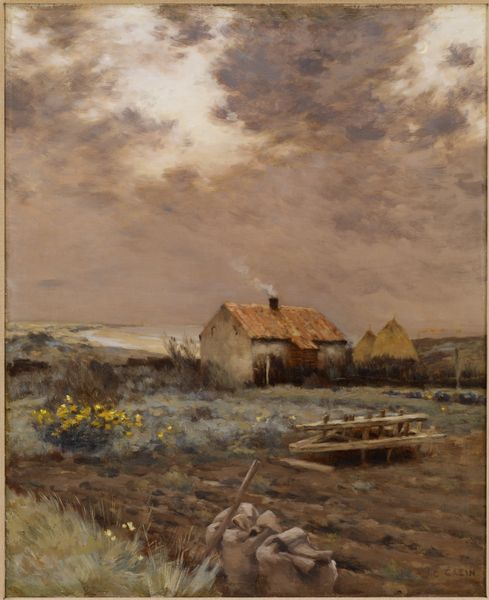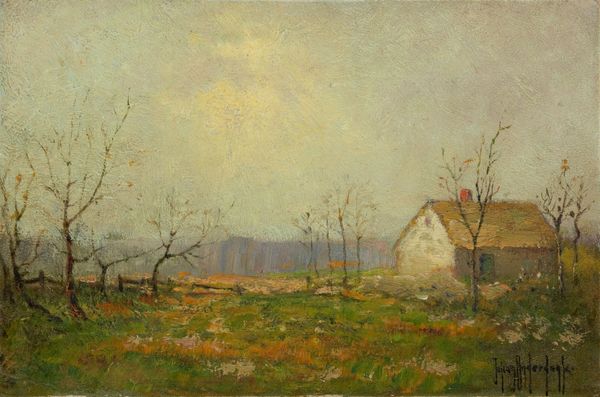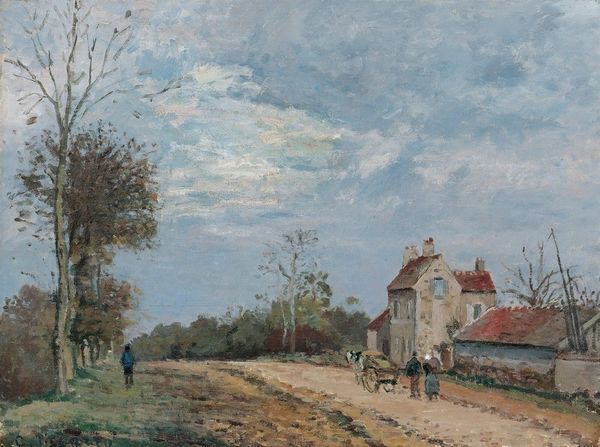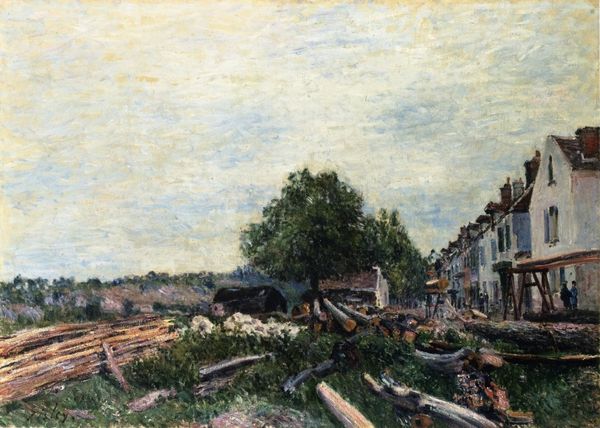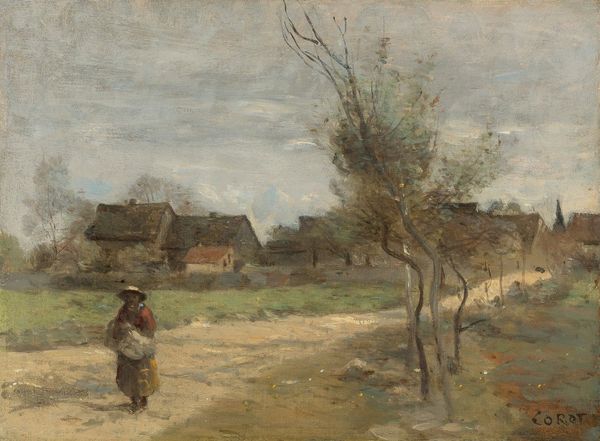
painting, oil-paint
#
water colours
#
ink painting
#
painting
#
impressionism
#
oil-paint
#
landscape
#
impressionist landscape
#
road
#
orientalism
#
genre-painting
#
history-painting
#
realism
Dimensions: 41 1/2 x 48 1/4 in. (105.4 x 122.6 cm)
Copyright: Public Domain
Curator: Jean-Charles Cazin’s oil on canvas painting, titled "The Route Nationale at Samer," believed to have been completed between 1861 and 1901, presents a quietly evocative landscape. It is currently part of the collection at the Metropolitan Museum of Art. Editor: There's an immediate stillness. The muted color palette and diffused light contribute to a feeling of serene melancholy, as if we're glimpsing a moment suspended in time. The rough materiality of the brushstrokes adds to the scene's unpolished realism. Curator: The presence of the road—the route nationale—evokes notions of both journey and connection. Roads often signify choices, destinies, and the movement of people, ideas, and goods. Considering the period in which it was made, we might even contemplate its connections to trade and industry. Editor: I agree. But from a purely formal standpoint, I find it masterful how the composition is structured by converging lines. The road leads the eye deep into the scene, only to be intercepted by the placement of the buildings. This disruption creates visual tension and makes the road not just a feature, but a powerful design element. Curator: And observe the figure of the woman—her role as a symbol might allude to traditional rural life and labor, her stoic figure embodying endurance and resilience against the backdrop of this landscape, carrying a container that implies sustenance, continuity, and nurture. Editor: You are right, the palette limits our emotional interpretations to introspection or nostalgia. I want to point out how Cazin's use of light is interesting; it almost dissolves the forms. The subtle gradations across the canvas don't highlight objects, but give texture. This pushes the scene more toward abstraction, dissolving a traditional clear focal point. Curator: Absolutely. These ordinary objects create an impression of both temporal specificity, the record of the history of a nation perhaps, but also a wider connection, revealing broader meanings for future generations to consider and explore in terms of cultural memory and association. Editor: Ultimately, I see Cazin's approach to this painting as being deeply introspective. The elements merge in an emotive manner and are used to invite reflection on place, temporality, and human experience.
Comments
No comments
Be the first to comment and join the conversation on the ultimate creative platform.
